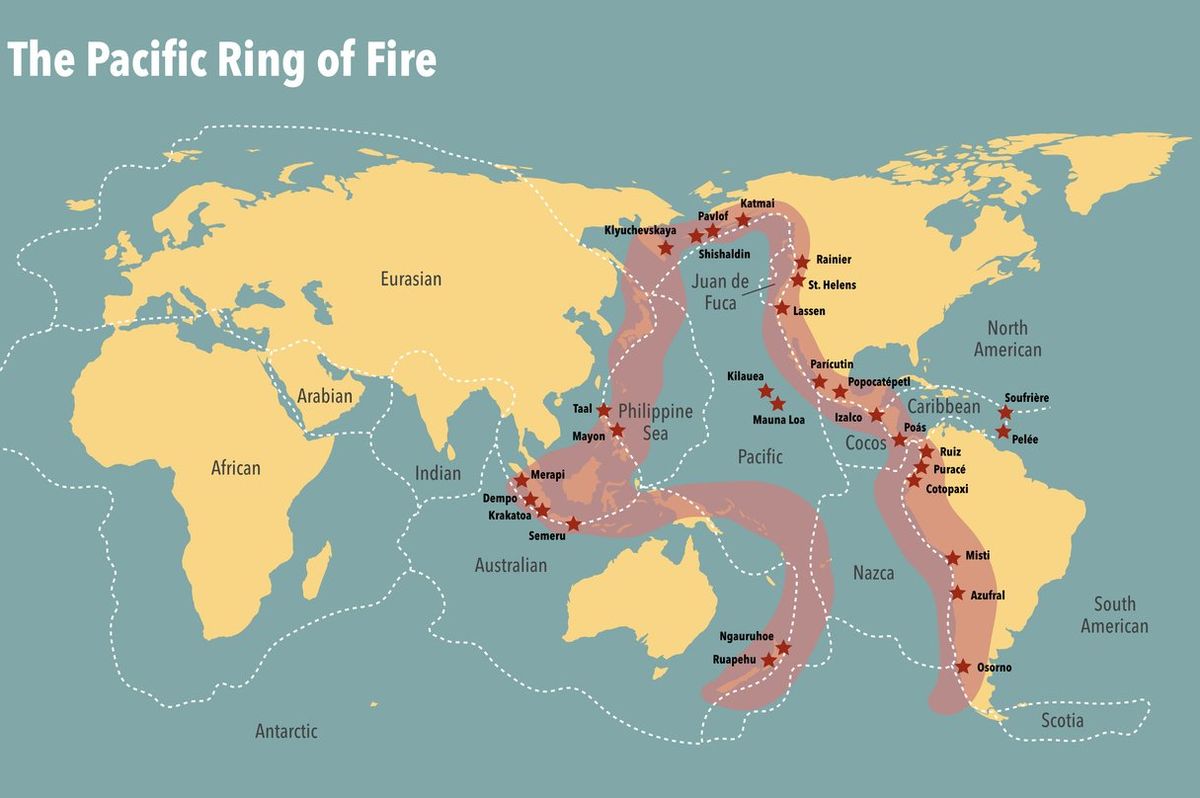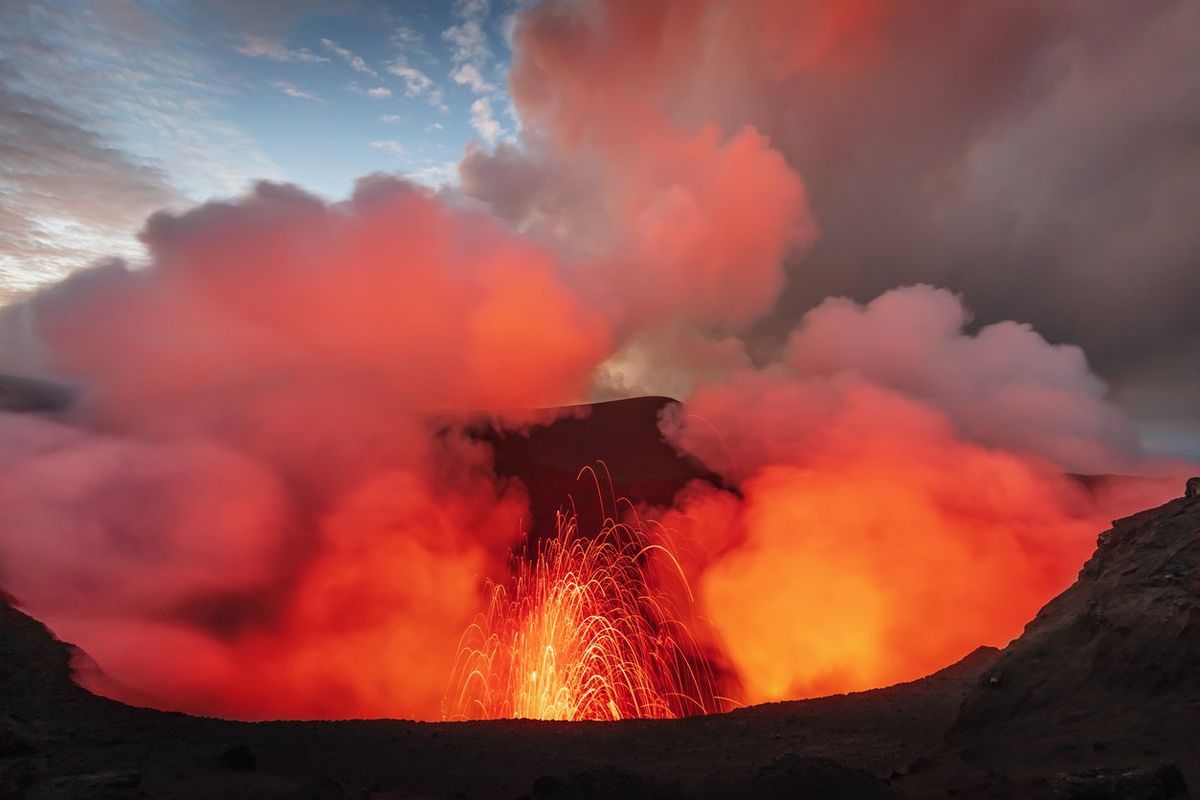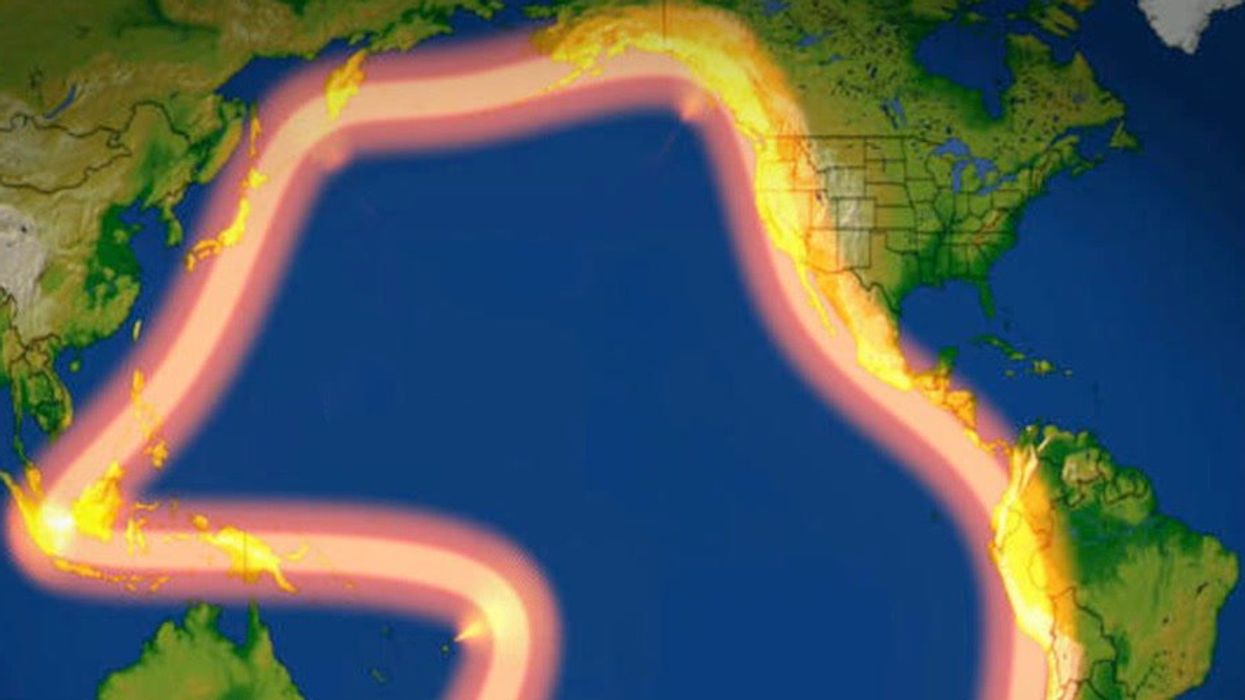Science & Tech
Harriet Brewis
Mar 17, 2024
Explaining The Ring Of Fire
India times / VideoElephant
The Ring of Fire is one of the most iconic geological features in the world.
Stretching some 40,000 km along the Pacific Ocean, it is home to 75 per cent of the Earth’s volcanoes and 90 per cent of its earthquakes, making it the planet’s greatest hotbed of violent seismic events.
And yet, this extraordinary area may be faced with some competition in the dramatic tectonic stakes, with experts warning that the Atlantic could eventually begin to close and form a Ring of Fire of its own.
For an ocean such as the Atlantic to stop growing and shut itself off, new subduction zones must form within it – areas where one tectonic plate pushes another down into the mantle below.
The heat from the mantle then melts this rock, transforming it into magma. And the abundance of magma near to the Earth’s surface creates the perfect conditions for volcanic activity, as National Geographicnotes.
The vast quantity of volcanoes and earthquakes along the Pacific Ring of Fire exists largely thanks to the many subduction zones that lie along its path.

And yet, it takes a lot for these boundaries to form. The zones require tectonic plates to bend and sometimes fracture – a hard process to initiate given how strong and resilient the plates are, as tectonics expert Dr João Duarte, of the University of Lisbon, has pointed out.
In a new paper titled ‘Gibraltar subduction zone is invading the Atlantic’, Duarte and his team write: “The aged oceanic lithosphere (crust and mantle) is thick and strong, making it resistant to breaking and bending.”
A possible solution to this “paradox”, Duarte and his team propose, would arise if subduction zones could migrate from an ocean at the end of its life – like the Mediterranean – to oceans at the peak of their geological life – like the Atlantic.
Now, he and his colleagues are now arguing that a subduction zone, which currently lurks under the Strait of Gibraltar will eventually “invade” the Atlantic.
This will then lead to the formation of a "subduction system" in this ocean – in other words, a line of volcanoes along the coastlines of Africa and Iberia, or an Atlantic Ring of Fire.
What's more, this will all happen "soon" from now, in geological terms – at least 20 million years from now.
The Gibraltar subduction zone – known as the Gibraltar Arc – was once very active, but it has “significantly slowed down in the past millions of years,” according to Duarte’s research, published in the journal Geology.
However, by using state-of-the-art geodynamic models, “that reproduce the evolution of the Western Mediterranean”, he and his colleagues have concluded that “the arc will propagate farther into the Atlantic after a period of quiescence”.
Gibraltar subduction zone is invading the Atlantic (top view)youtu.be
Nevertheless, to form a Ring of Fire you need more than one subduction zone.
Handily, there are two others on the other side of the Atlantic: the Lesser Antilles in the Caribbean and the Scotia Arc, near Antarctica.
Still, these subductions formed in the West Atlantic around 50 million years ago and have been slowly moving ever since, Duarte told IFLScience.
"For them to win over the opening of the Atlantic they will have to spread, and eventually force the Mid-Atlantic ridge to subduct. This may take more than 20 million years.”
What excites him most about the Gibraltar Arc is that, unlike the Lesser Antilles and Scotia examples which invaded the Atlantic millions of years ago, Gibraltar is still in the “early stages’ of the process.
"Subduction invasion is inherently a three-dimensional process that requires advanced modelling tools and supercomputers that were not available a few years ago,” Duarte said in a statement.
“We can now simulate the formation of the Gibraltar Arc with great detail and also how it may evolve in the deep future.”

He also noted that whilst the closing of the Atlantic might imply that the Pacific Ocean will open up even wider, he doesn’t view this as a likely outcome.
Rather, “Everything seems to suggest that the Pacific will close," Duarte told IFLScience.
"This was something that troubled me for a while… The solution is that another ocean has to open, and that may well be the Indian, or even an ocean that may split Africa and Eurasia.”
He and his team believe that the opening of the East African Rift, which will eventually create a new continent, might be the start of this, along with rifts within Asia.
Luckily for us, not even Bryan Johnson is likely to be around to see the fiery effects of this ring formation, which means that holidays on the Iberian and African coasts are still on the cards.
Sign up for our free Indy100 weekly newsletter
Have your say in our news democracy. Click the upvote icon at the top of the page to help raise this article through the indy100 rankings
Top 100
The Conversation (0)














